Philips recently unveiled OLED959 and OLED909, both with 2nd gen MLA technology, alongside OLED809 with OLED EX, and OLED759 with Titan OS. Here is our first look at the 2024 TVs and the new Ambilight Plus.
There is a lot to cover this year. Philips' two new 9-series OLED ranges feature second-generation MLA OLED technology with up to 3000 nits peak brightness, according to Philips. Additionally, some lower-tiered OLED and LCD models are transitioning to a new Titan OS, including OLED759.
Philips is also introducing an enhanced 2-dimensional Ambilight Plus system and reintroducing its flagship model, OLED959, featuring custom-designed speakers from Bowers & Wilkins.
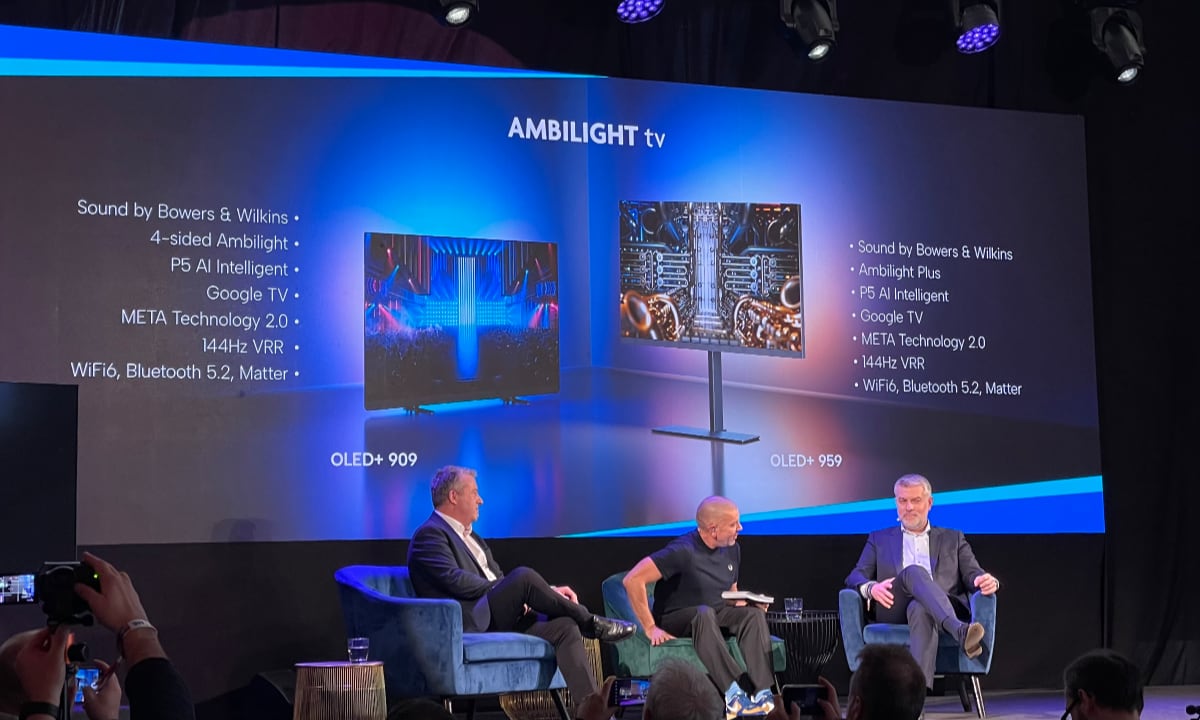
Some of the key features of the 2024 Philips Ambilight OLED TVs. Photo: FlatpanelsHD
We have already covered the noteworthy updates in our news article and shared a demonstration of the new Titan OS here.
In this article, we will share our first impressions, videos from the presentations, and cover additional details about the 2024 models.
Brighter OLED TVs in 2024
Philips introduced its first OLED model with MLA (Micro Lens Array) technology last year, and in 2024 it is bringing the second-generation MLA panel to OLED909 and OLED959.
According to Philips, the panel can reach up to 3000 nits of peak brightness, depending on the picture mode. It remains to be seen how high it will be in calibrated mode. The company has not commented on full-screen brightness, but FlatpanelsHD learned at CES that it is rated at 250 nits by LG Display.
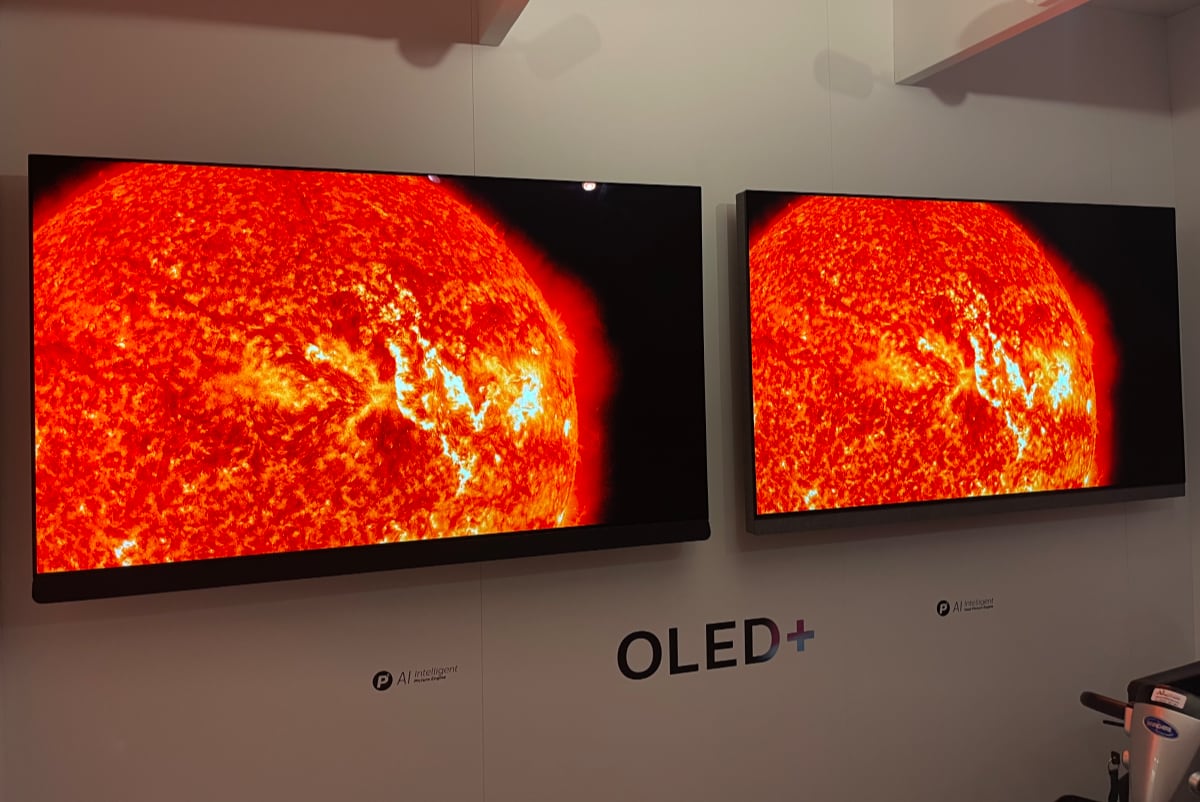
Left: 2023 Philips OLED908 (MLA OLED). Right: Philips OLED909 (2nd Gen MLA OLED). Photo: FlatpanelsHD
We had an opportunity to see the 2024 MLA OLED TV (OLED959) in action alongside its 2023 counterpart (908), which was specified to 2100 nits. The demos included scenes of the earth, sun, colorful explosions, and fireworks. The increased peak brightness was clearly noticeable in these scenes. The very brightest objects in the picture exhibited more sparkle, glow and intensity.
More significantly, smal bright objects displayed at 3000 nits, or 2000 nits, on an OLED TV appear more impactful, yet maintain finesse, compared to the brightest miniLED LCD TVs. This difference can be attributed to OLED's pixel-level control of both luminance and color, as opposed to LCD TVs' limited number of dimming zones. It is a difference of finesse over brute force, or quality over quantity, if you will.
While there was no opportunity to compare the 2024 MLA OLED to QD-OLED this time, Philips pointed out last year that both panel types have their own strengths. For example, MLA OLED excels in high white peak brightness, whereas QD-OLED delivers more saturated colors at high brightness levels.
During the demos, it seemed that the 2024 MLA OLED exhibited somewhat better color saturation at high brightness levels compared to the 2023 MLA OLED panel. At CES 2024, LG Display also emphasized "improved color brightness of up to 1500 nits". However, we will need to get our hands on a sample to check whether it is an actual improvement or simply a matter of picture settings.
Aside from that, the 2024 MLA OLED panel looked very similar to the 2023 version, featuring the same, more effective anti-reflective coating and slightly wider viewing angles than standard WOLED.
This year's OLED EX panel in the 809 and 759 series is also brighter, according to Philips. OLED809 in 55-77 inches is expected to hit 1300 nits peak brightness and 200 nits full-screen, up from 1000 nits and 185 nits last year. OLED759 and the 42-48-inch OLED809 should hit 1000 nits peak and 150 nits full-screen, up from 900 nits and 135 nits last year.
An upgraded P5 video processor
With its high-end 2024 OLED TVs, Philips is introducing an 8th generation of its P5 video processor, which utilizes new AI-trained systems for picture enhancement and adaptive features.
This new processor will come in two versions: '8th Gen P5 AI' in OLED909 and OLED809, and '8th Gen P5 AI Dual Engine' in OLED959. While most features remain the same, the latter offers additional capabilities, as outlined in the slide below.
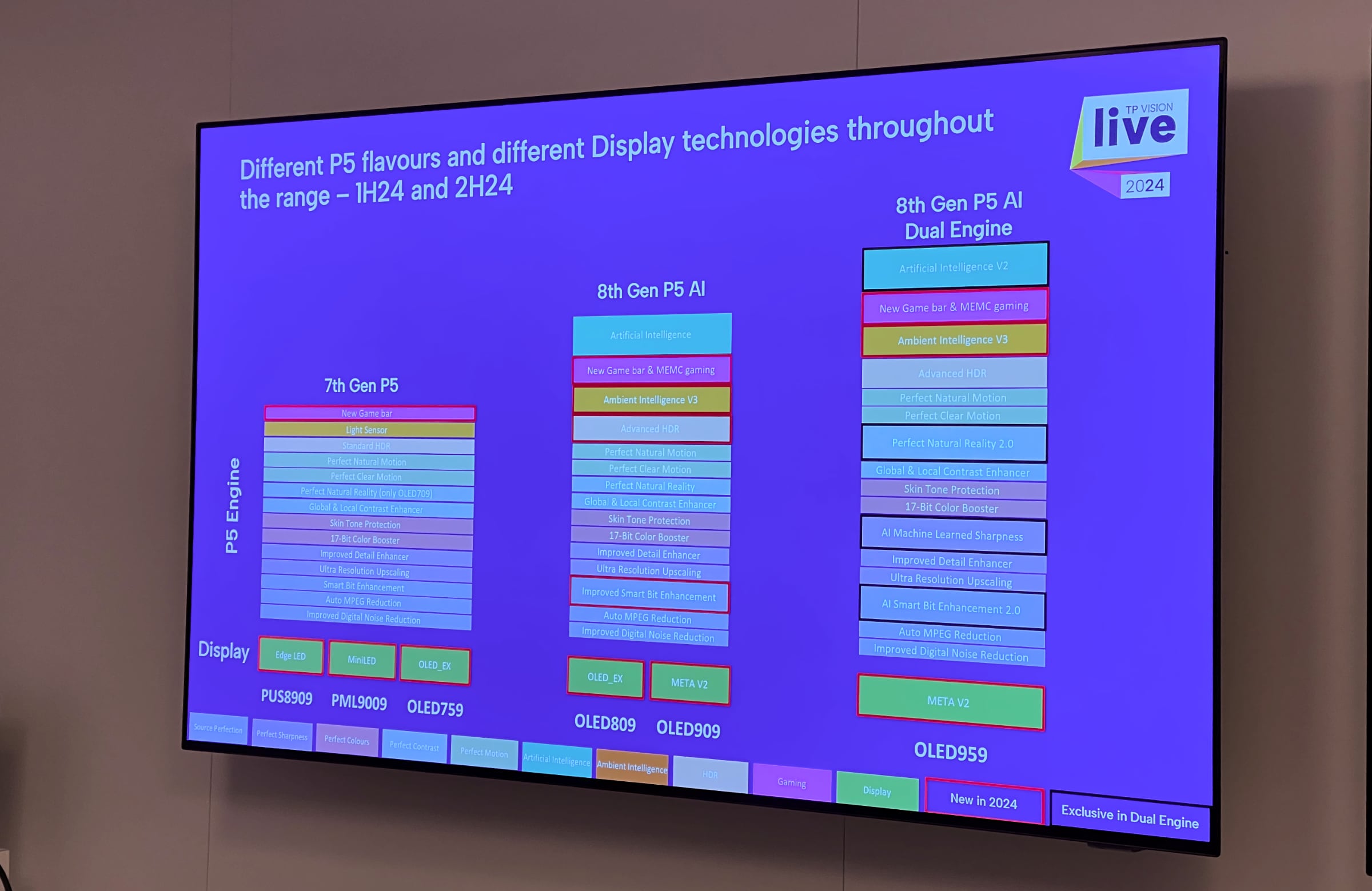
The 8th generation of the P5 video processor. Photo: FlatpanelsHD
For the first time, many of the TVs will support 144Hz input for SDR, HDR10, HDR10+, and Dolby Vision. At this time, it is only relevant for PC users as the current games consoles max out at 120Hz, but you never know what will happen in the future.
Speaking of gaming, Philips is introducing a new Game Bar that displays information and provides quick access to various gaming features, as detailed below.
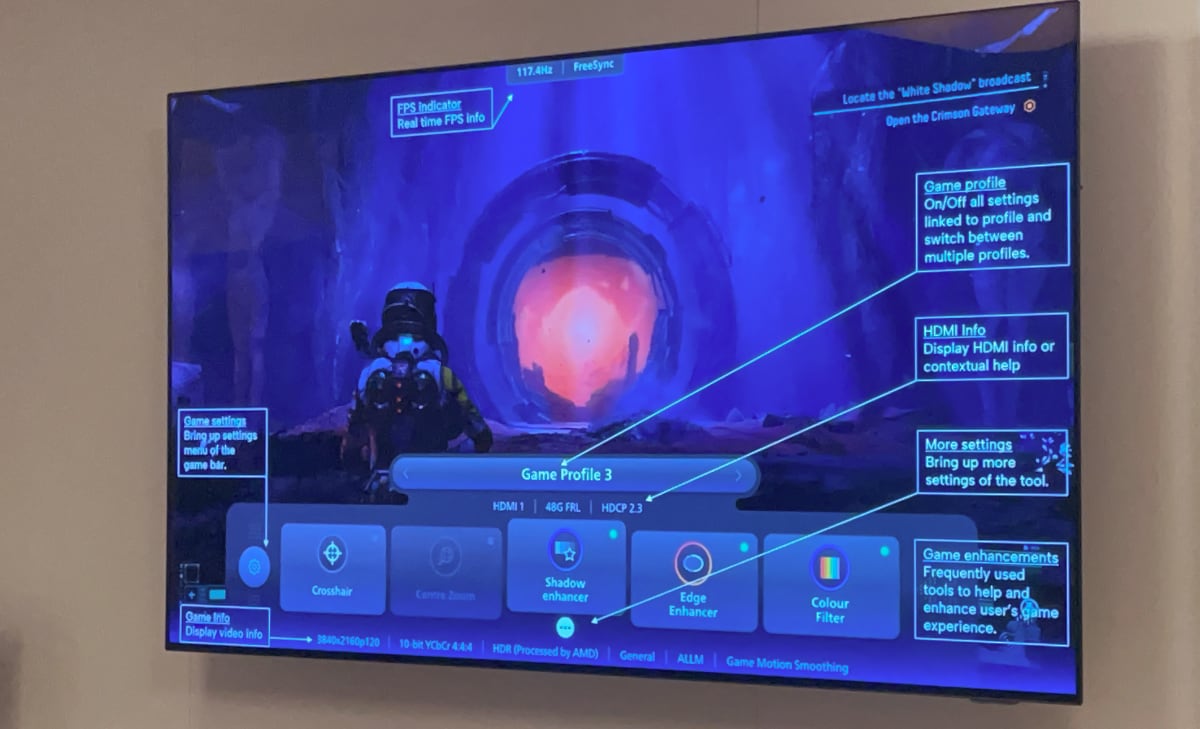
The new Game Bar menu in the 2024 Philips TVs. Photo: FlatpanelsHD
Philips' picture guru, Danny Tack, gave a presentation on the new features of the 8th generation P5, which we filmed. See the embedded video below.
One notable addition is the 'Smart Bit Enhancement', designed to reduce banding in highly compressed content such as streaming media. We witnessed its effectiveness firsthand after the presentation, which is good news as we observed issues with banding on last year's OLED908.
2-dimensional Ambilight Plus
2024 marks the 20th anniversary of Philips' mood-lighting system, Ambilight, which has evolved from a relatively basic implementation to one that is now highly customizable, adjustable (to your wall color etc.), and available in most of Philips' TV models.
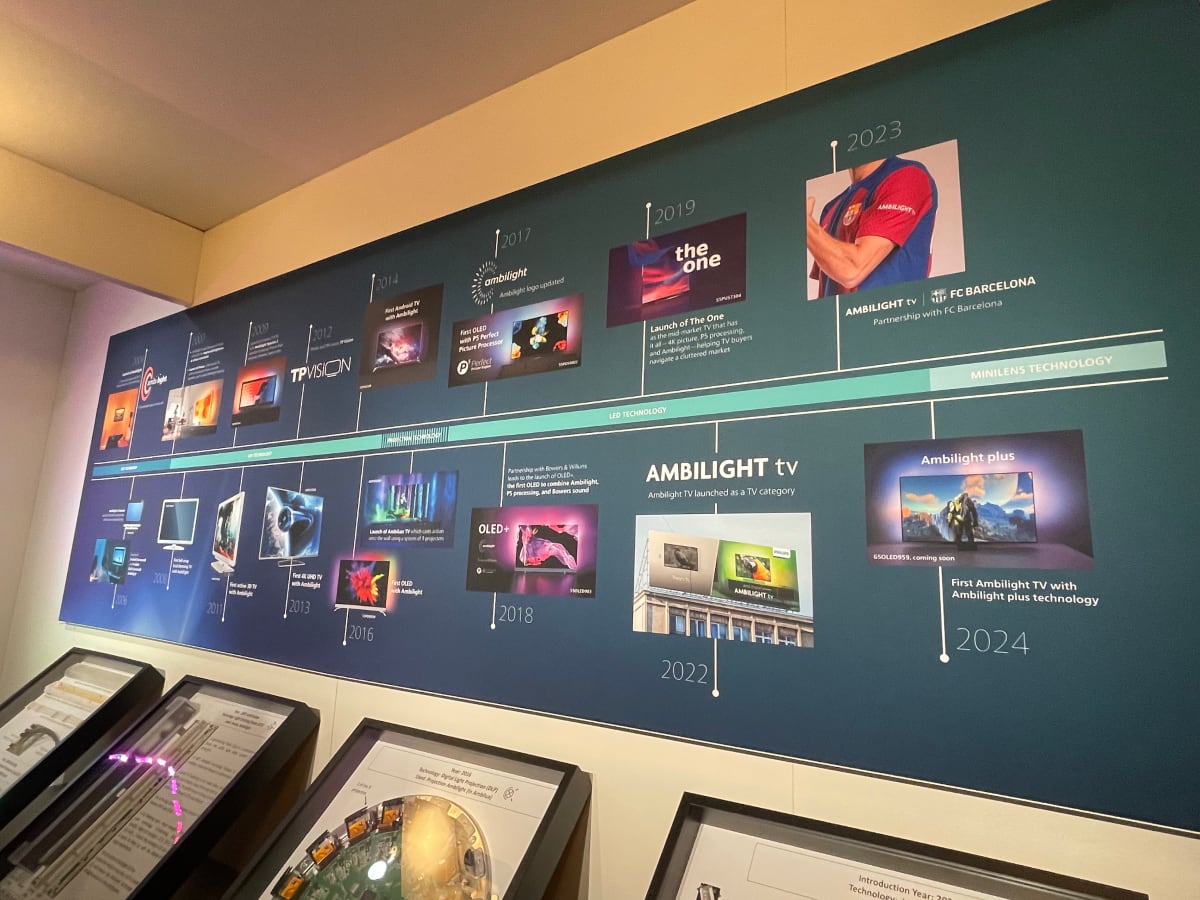
Ambilight turns 20 years old in 2024. Photo: FlatpanelsHD
For example, if you prefer not to have Ambilight follow the colors on the screen you can set it to a static color, known as bias lighting. You can adjust its intensity and for the first time customize each of the Ambilight modes. Alternatively, if you enjoy dynamic mood lighting effects, there is a new 'AI Ambilight' mode that adapts the Ambilight effect to the type of content being viewed. This last feature is exclusive to the Google TV OLED models – it will not be available in Titan OS models such as OLED759.
The company has even gone as far as to change its TV branding to 'Ambilight TVs' to emphasize that it considers Ambilight a distinct category of TVs.
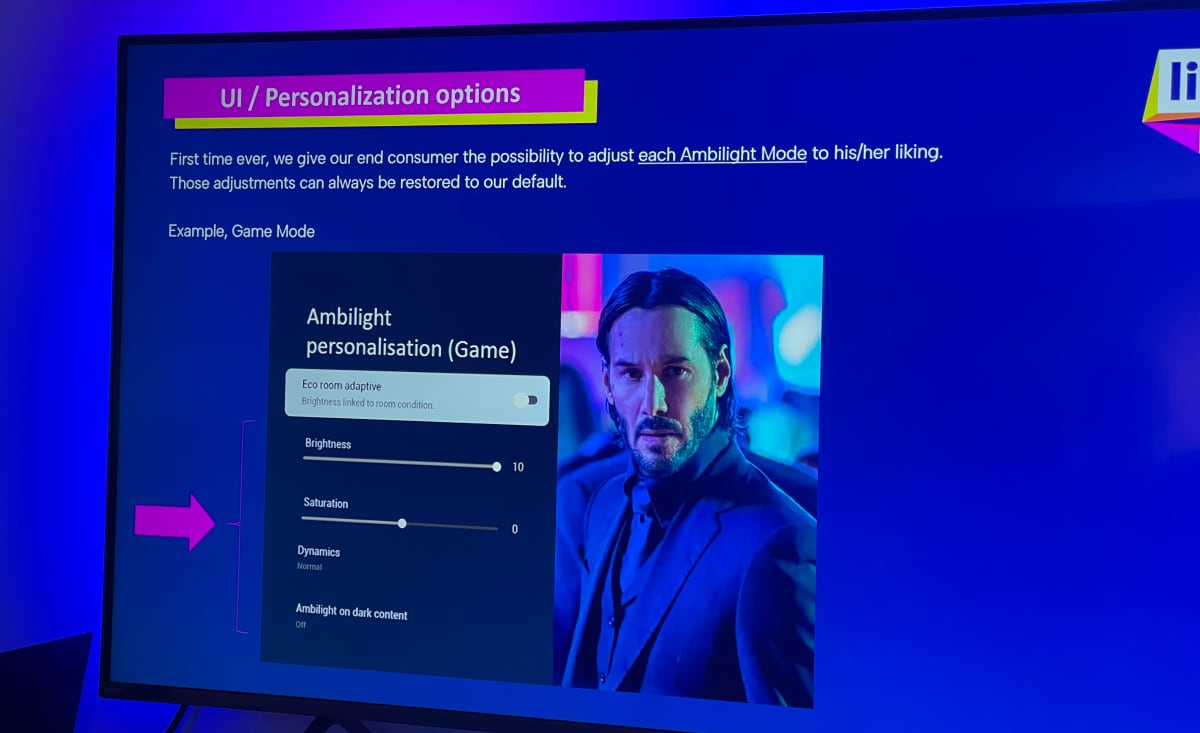
New customization options for each Ambilight mode. Photo: FlatpanelsHD
In 2024, Philips is introducing Ambilight Plus, described as 2-dimensional. By utilizing multiple LEDs and convex minilenses – small optical lenses – it can direct light to specific zones behind the TV, creating this 2-dimensional effect.
You may recall that Philips previously touted a 2-dimensional Ambilight system back in 2016 with Ambilux, which utilized pico-projectors to create the effect. However, Ambilux never gained traction and was discontinued after just one generation, partly due to its high production costs.
Having seen the Ambilux system back in the days at IFA in Berlin, I remember that it projected light further out than the new Ambilight Plus system, but I still think the effect from Ambilight Plus is better, thanks to its use of much brighter RGB light emitting diodes rather than pico-projectors. Ambilux worked well only in dark rooms, whereas Ambilight Plus still worked effectively even in a brightly lit room.
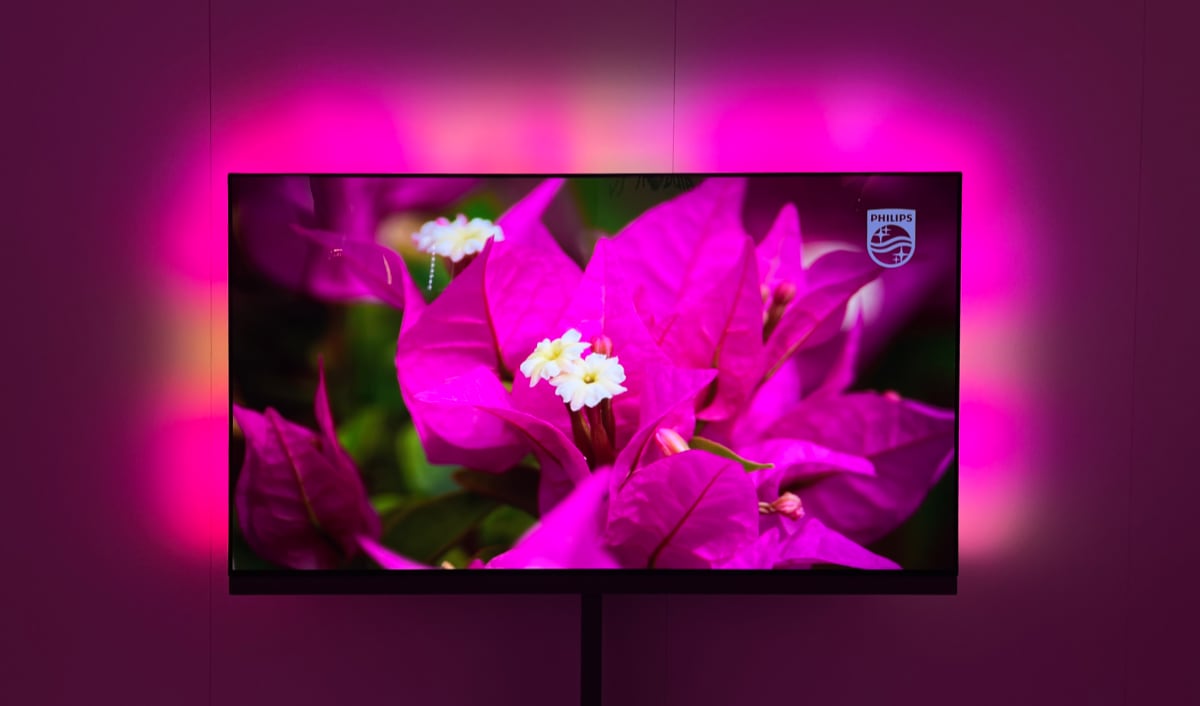
Ambilight Plus is only found in the flagship OLED959. Photo: FlatpanelsHD
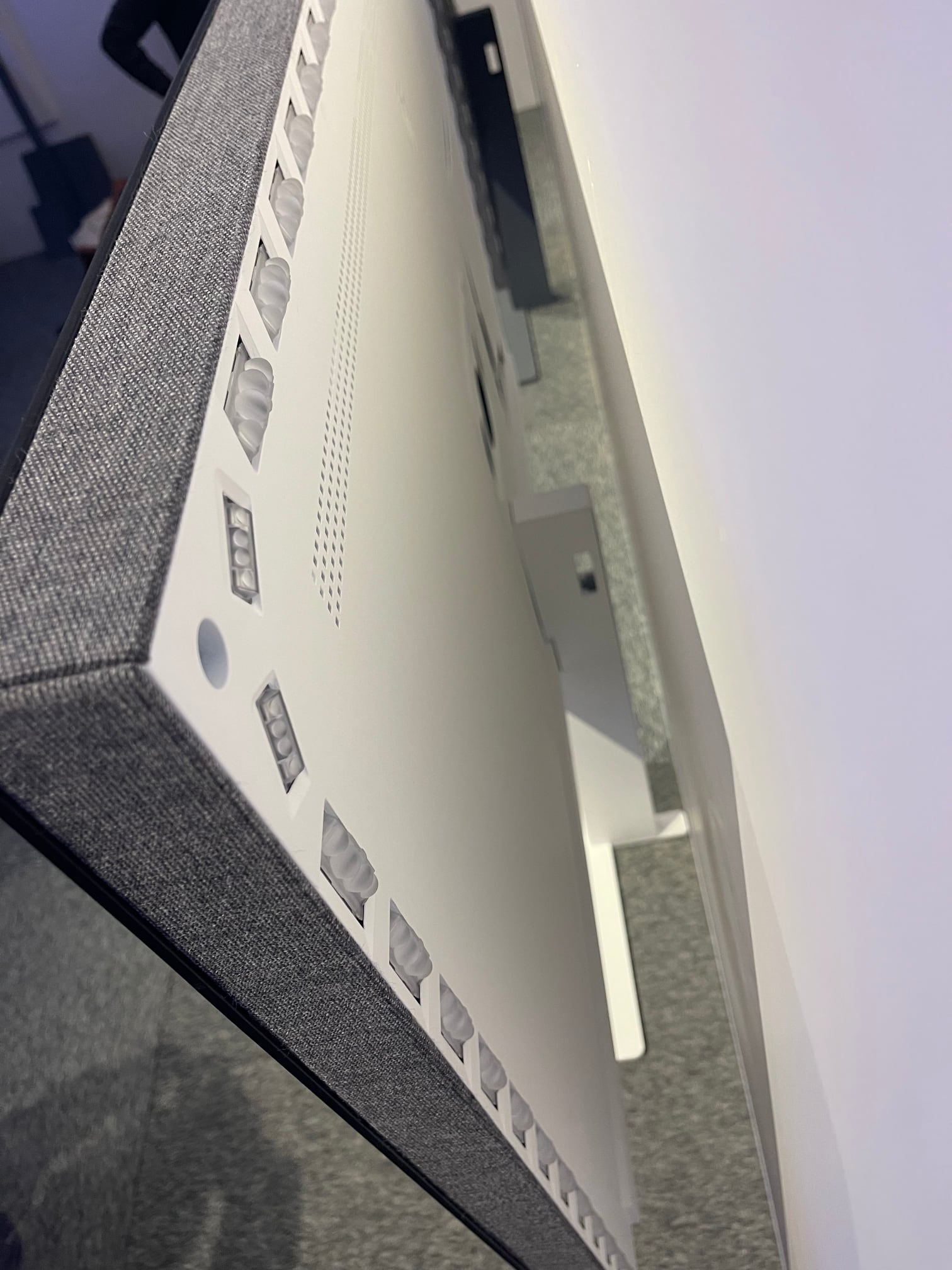
Here's Ambilight Plus as seen from behind on the OLED959. Notice the 4-clusters of LEDs. Photo: FlatpanelsHD
The dynamic and colorful Ambilight mode still appears to be one of those divisive features – some people love it, while others love to hate it. Philips itself likes to highlight that Ambilight has the highest retention level of any TV feature, meaning that when European consumers upgrade their TVs, it is the one feature they prioritize the most, if it was available in their previous TV.
With the new customization and optimization options, along with the improved effect from Ambilight Plus, 2024 represents the biggest advancement for Ambilight since its inception, in my opinion. However, it is worth noting that Ambilight Plus is only available in the most expensive OLED959 and is limited to a 3-sided configuration, compared to the 4-sided "old" Ambilight in OLED909.
You can see how Ambilight Plus works in this brief video:
OLED759 with 4x HDMI 2.1 ports
As you may recall from our news report, OLED759, which will replace OLED708, was not showcased at the launch event in Barcelona, but we have managed to gather more details about it.
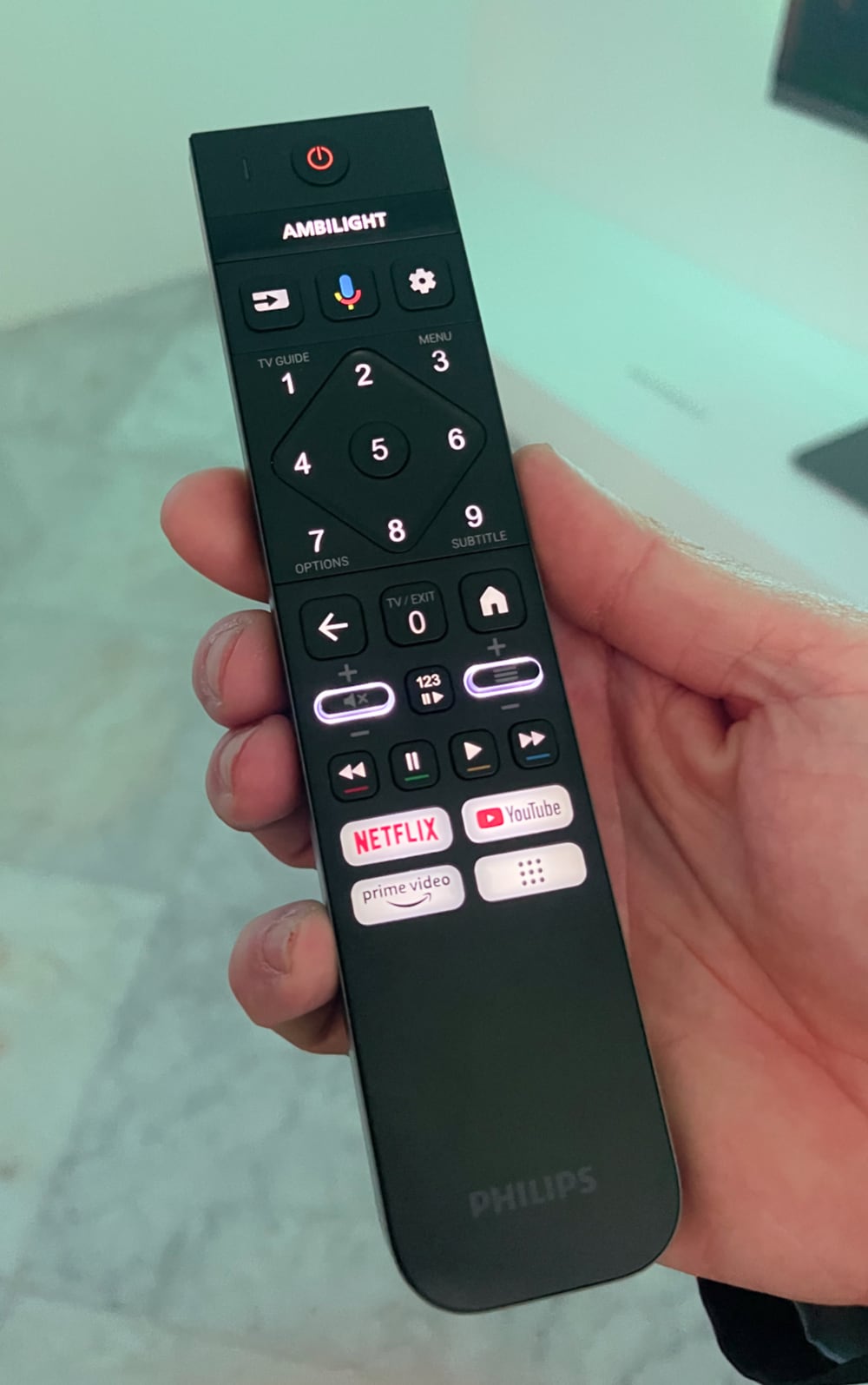
Philips' new remote with Qi charging
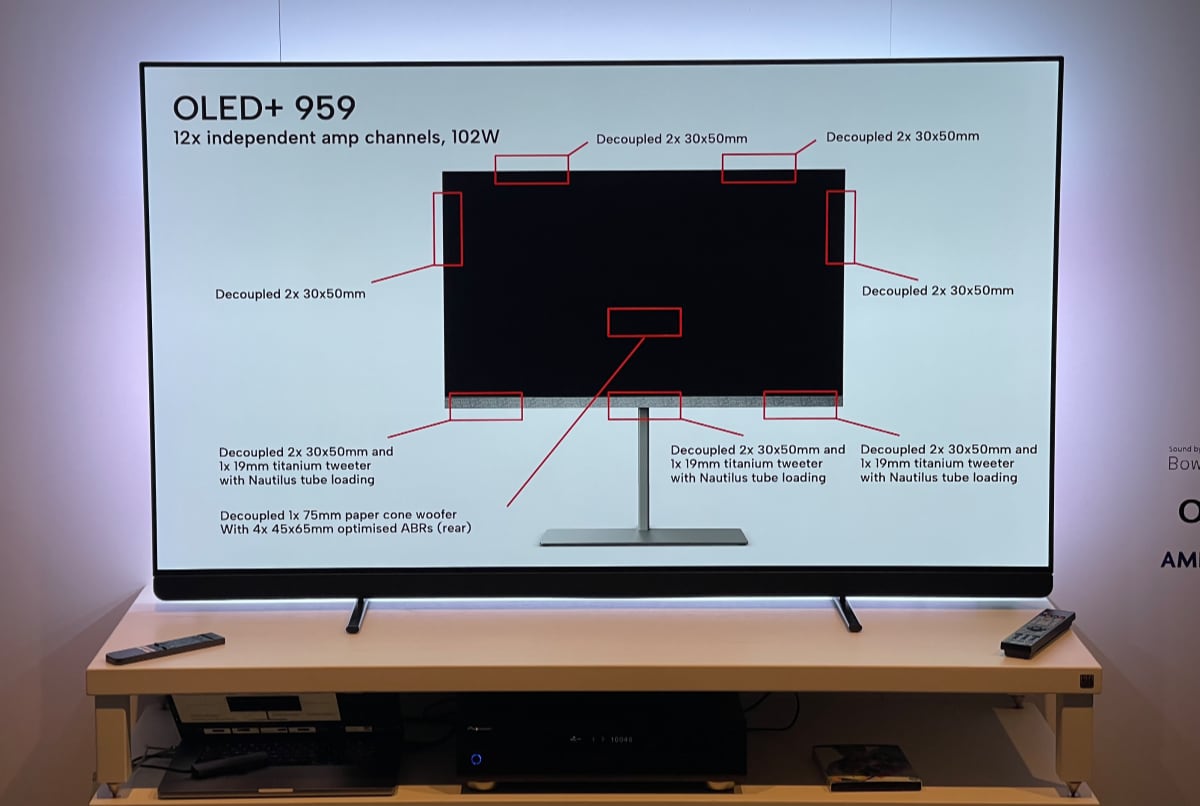
The Dolby Atmos speaker system in OLED959, developed by Bowers & Wilkins. Photo: FlatpanelsHD
We briefly listened to the speakers system, watching a movie, and while it was a convincing showcase, it is still just TV speakers constrained by the physical limitations of a slim TV cabinet. Nonetheless, I suspect that most living room users would be satisfied, except perhaps for those seeking rear audio. An interesting detail is the option to connect a conventional subwoofer.
As for the Google TV models, Philips confirmed to FlatpanelsHD that they will once again this year launch on Android 12. They are already looking into the Android 13 upgrade, but they could not provide a timeline.
OLED959 is scheduled to launch in Q3 2024, while OLED909 and OLED809 are both planned for Q2 2024, followed by OLED759.
In addition to the other models, we have added OLED759 and PUS8309 to the TV Database and filled in the missing pieces for the other models. Click on the model names below for more details.
Philips 2024 TVs – specifications
FlatpanelsHD